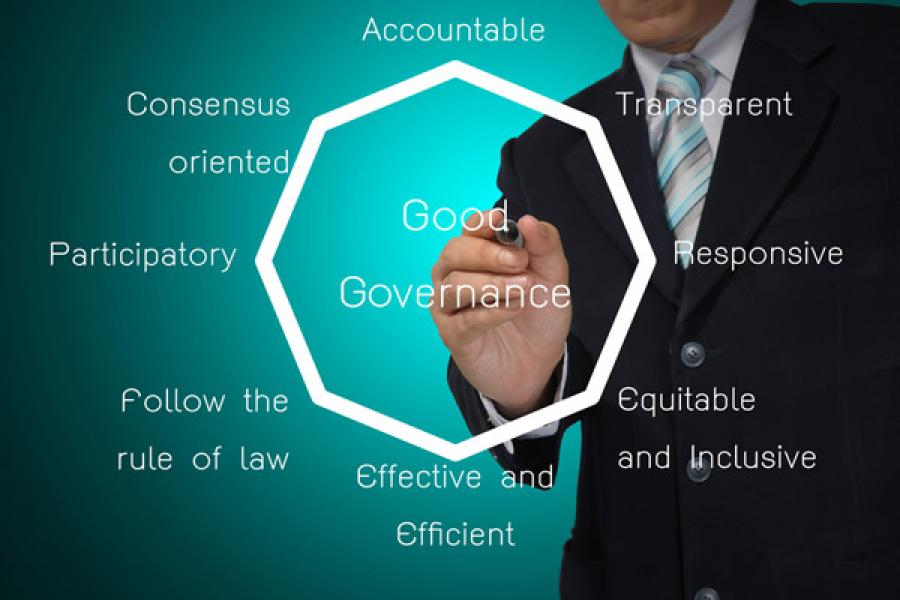Leadership is the operational leg of good governance
A well governed national education system will make sure that every student has a chance to get a good quality education regardless of economic or social background
Image: Shutterstock
“It’s just jargon”, smiled a colleague when I spoke of a governance strategy and operational plan for a client. “Nobody is going to look at this again, you know”, smirked another. I knew they were right, but I also knew that they were setting themselves up for failure if they ignored governance. Their reluctance was understandable - all the previous pieces on governance were stodgy and maimed operational efficiency. Just getting the governance bits done would have taken them ages - no wonder they wanted to push it to a dusty dark corner.
Worse was to come - nobody could agree on what the term Governance really meant. For some it was about supervision, for others it was about formal meetings of the powers that be that would lead nowhere. For most it was hurdle to be jumped. Or circumvented.
If that were so, then there is no path ahead. Without good governance there can only be stagnation. Governance is much more than mere policing of current operations. Good governance is a process of setting up systems that encourage continuous improvement. In a nutshell, it is about watching out with a sense of ownership for ways to make things better. It has influence beyond an organisation and ideally will be able to positively impact the entire ecosystem. Any one who has been a vendor or a supplier to a large corporation will vouch for that - good governance processes in the large client organisation may not force you to behave better in your own business but will certainly encourage certain good behaviours.
Some of them could be as simple as on time billing, regular tax returns. Others include more ethical treatment of wage labour, safety on site and more. Countries too that have stronger governance processes are easier to deal with - at least one knows where one stands with them. Purely from the point of view of doing business, the indices clearly indicate that those countries that invest in good governance are easier to invest in and engage better on the world stage.
So what does a well governed system do? Make things easier, of course. And make them easier for all the participants. For example a well governed national education system will make sure that every student has a chance to get a good quality education regardless of economic or social background. It will ensure that the student has pathways to success and recourse to aid and advice when required.
Success will not depend on fear or favour, regardless of cronyism or affirmative action. Does that sound utopian? If it does, then remember we are describing what successful good governance looks like once it is done. The journey is barely begun. How will a governance system make this happen? It is not as difficult as the grand words make it sound - in education it starts with teachers actually attending school and teaching as they are supposed to, with care and conviction. For teachers it means having some one to turn to for help and advice, and progression in their careers. For school administrators it means having professional standards to be accountable to as they run their schools. Who designs and sponsors all of these? The governors. Who aligns these so that they meet defined objectives? The governors. Who picks up the pieces again and again when systems crumble? The governors. This is the job of a governance system - keeping stuff on track and constantly pushing it to do better.
Who makes good governance happen? Who are these people who do all this nudging and pushing? How many of them do we need? Is this another middle or upper middle layer of management? More fat to the machine. Err.. grease, not fat. It is true that there need to be people in charge of pushing things along. But not all need to be new people, nor does one always need more people. A good governance system by design is almost invisible, and seamlessly integrates with operations. If your governance system is a drag, you can be sure that it is either badly designed or is not being operationalised well.
Leadership is the operational leg of good governance. A leader at any level is already tasked with ensuring that processes run smoothly towards agreed goals. The leader (at any level) is then accountable for good governance to their board, or owners or sponsors. And is responsible for setting up a well functioning chain of such accountability.
Now for the secret sauce - you gotta keep stirring it. Good governance works well only if it is an active, alert and responsive beast. Let it stagnate and it can do more damage than good. One doesn’t need more people to keep stirring the pot. All we need is active and engaged communities that are not blocked out and can keep an eye on the pot - whether it is the competition (read opposition), the commentariat (or media), the people who are to be served or even external observers. As long as the pot is watched, it is unlikely to boil over - little can go wrong, and things might even get better.
The thoughts and opinions shared here are of the author.
Check out our end of season subscription discounts with a Moneycontrol pro subscription absolutely free. Use code EOSO2021. Click here for details.

